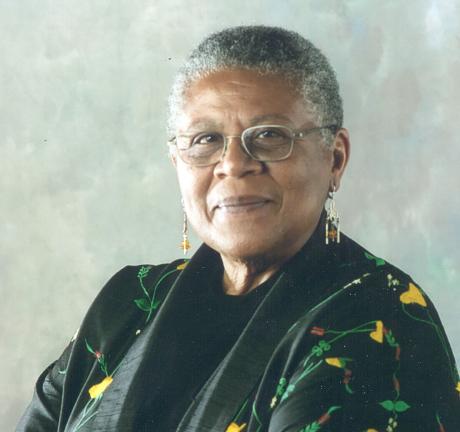Little Rock Nine member Minnijean Brown-Trickey “hangs out” with Gettysburg

Minnijean Brown-Tricket visited Gettysburg College to talk about her experience combating racism and prejudice. Photo Credit: Rebelmom.com
By Kayla Britt, Staff Writer
On Thursday, April 17th at 7:30 p.m., the CUB Ballroom was packed with members of the Gettysburg community eagerly anticipating the presence of Minnijean Brown-Trickey, a member of the Little Rock Nine. The event was well-advertised all over campus through posters, articles, e-mails and word of mouth and was the culmination of collective efforts by the Garthwait Leadership Center, Center for Public Service, Interfraternity Council and Eisenhower Institute.
“Let’s hang out for a minute,” Minnijean Brown spoke to the audience as the lights dimmed and she stood on the Ballroom stage. A social worker, activist, and passionate speaker, Brown has been a long-standing advocate for equal rights in multiple spheres and has been a pioneer on the path to a more inclusive society. She was one of nine students who were the first to attend an integrated high school- Central High- in Little Rock, Arkansas.
Her lecture was preceded by several individuals as well as a performance by the Random Acts of Theatre Company, also known as RA TCO. Katherine Fila ’15 and Sarah Pagliocco ’15, project leads through the Garthwait Leadership Center, introduced the speaker. Allan Kawala ’13 also spoke to the audience about the semester-long Leadership Institute that he led and noted that it is important to remember the past, as it holds particular significance for our future.
RATCO is a group of young performers across a diverse range of backgrounds from Selma, Alabama who meet weekly to express them- selves through artistic outlets and connect with each other in a city still segregated on many levels. The group’s performance on Thursday night was energizing and uplifting, and set the tone for the rest of the night. “Their presence at the event served as a powerful statement of hope for the future,” said Andrew Hughes, Director of the Garthwait Leadership Center.
After RATCO’s performance, Brown took the stage, claiming that RA TCO was “a hard act to follow”. In the fall of 1957, a little more than half a century ago, Brown and eight other students walked into Central High School. They were the first to integrate a school in the United States. Brown aimed to speak about leadership and social change through sharing her experiences and wisdom. She said that it was only years later that she realized the strength of the opposition she had been up against; although she could see the protests and threats, she was unaware of the salience of the propaganda that had circulated.
Of being one of the nine pioneering students at Central High, Brown said “I put my name on the list, and the rest was history.” Though she was given medals and awards, she particularly valued the statue erected in her honor. The quote she chose to be engraved on her statue was by Gandhi- “We must be the change we wish to see in the world.” She believes that we should act in the interest of seven generations; our stories are all intertwined.
“Curiosity is the diametrical opposite of stereotyping,” she said. Interdependence and connectivity are integral. She maintains that we should work with
people and be creative and curious- “or you’ll have a boring life, which I haven’t!” she quipped. Suffering can educate and transform if we allow it to. The triple evils she highlighted were poverty, racism, and militarism as well as materialism. We must think about what we want our society to become.
She proposed the question: where do our beliefs come from? This is an important question as our beliefs shape our actions. Our beliefs, she stated, are deeply rooted in our history. Our country has had a cultural mindset of white supremacy and black inferiority that has become entrenched through our policies and actions.
She cited examples such as the Dred Scott case and aws that imposed segregation, and suggested that we must know about our history in order to engage in unlearning this belief system. For this reason, Brown does not blame the Little Rock students for their role in the incident; their culture and upbringing shaped their beliefs and their actions.
After she finished speaking, she took a seat in the center of the stage and took questions from the audience- “I have six kids, so no question is too difficult!” she said light- heartedly. Some questions
asked included “What barriers exist today?”, “What did you do after your time at Central High School?”, “How did it feel when you were at Central?”, and “Have you forgiven those who made your life difficult?”
Jeffrey Rioux, Assistant Director of the Center for Public Service, was in- spired by her story, “The verbal and physical abuse didn’t go away just because President Eisenhower got them through the doors of the school . . . because of the system of racism which remained in place. I was reminded that the fight for justice is not easy, but we must do it,” he said.
Hughes was impressed by the massive turnout-. We did not expect the number of attendees to reach close to 500! It was truly inspiring to see so many students and other members of our community attend the event to hear Minnijean’s story.” Brown spoke with conviction and humor, and she captivated the audience. Her commitment to social justice is commendable and is an inspiration to us all. She left the audience with a piece of advice: al- ways be open to the opportunity to do social change: it will come to you.
